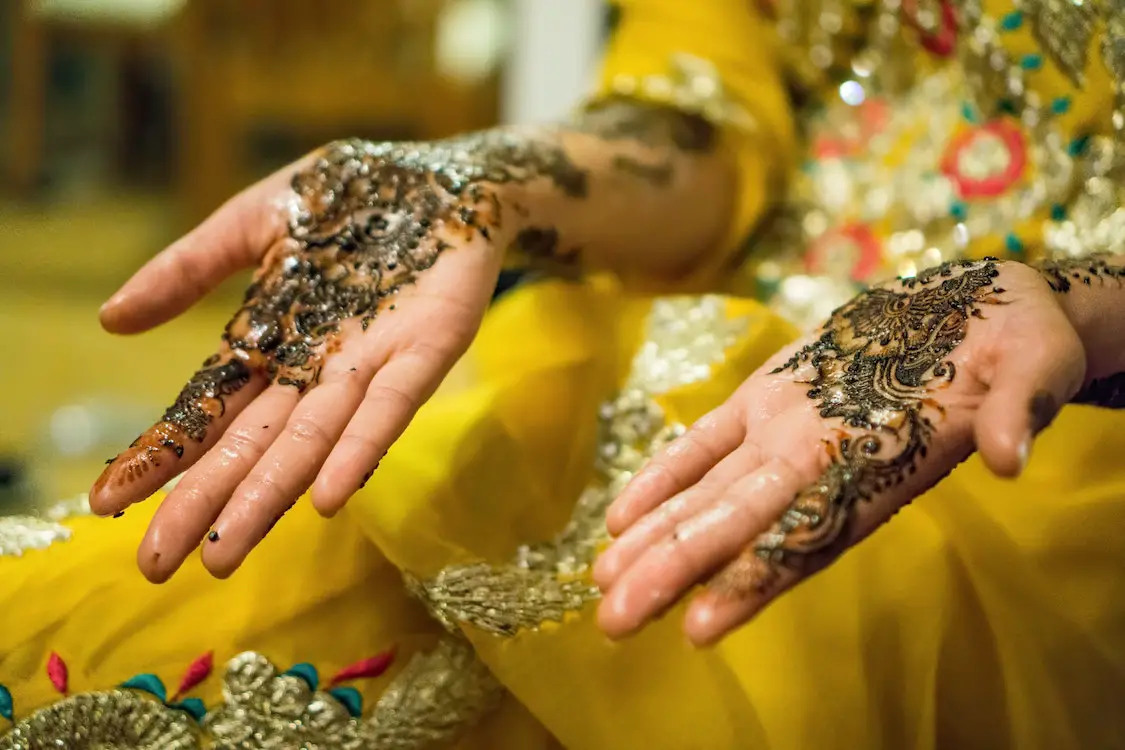Oxford English Dictionary defines cultural appropriation as “the unacknowledged or inappropriate adoption of the customs, practices, ideas, etc. of one people or society by members of another and typically more dominant people or society.” People have learned more about this term in recent years. Cultural appropriation has entered mainstream conversations about everything from the language we use to inappropriate Halloween costumes. Dressing up as other cultures suggests that other identities are disposable and for entertainment. They are not. Still, people have a lot to learn about cultural appropriation, especially regarding Muslim clothing and decorations.
In the Indian subcontinent, especially my parents’ country of Pakistan, the shalwar kameez is worn by both men and women. It consists of a tunic top and loose pants made of opaque material. Muslims and Hindus alike commonly sport this style because of its modest design.
After 9/11, people in the desi and Muslim community did not wear shalwar kameezes as much, opting instead for loose American shirts and pants or dresses. This was done because American prejudices turned against Muslims and desis, marking them as terrorists. Some men even began to shave their beards to avoid resembling Osama Bin Laden. Muslims were being targeted, and clothing like the shalwar kameez was one indicator of their religion.
Today, shalwar kameezes are becoming a trend among non-Muslims and people without a connection to the Indian subcontinent. One could argue the world has realized its mistakes and is now moving forward to embrace foreign cultures and religions. However, this is not the case. One UK brand went viral for selling the kameez, or tunic, part of the shalwar kameez as a “vintage, boho dress.” Not only is this inaccurate and an erasure of the garment’s origins, but it is also theft of cultural property.
Firstly, the shalwar kameez is a symbol of modesty and allows the wearer to cover up. Hence, it wouldn’t be just a shirt. Secondly, a white model is wearing this South Asian outfit. For a white person, the outfit is trendy, while for Muslims and South Asians, it marks them as targets. Lastly, this is blatant cultural appropriation. As per the definition, a marginalized group receives no credit for one of their community’s own creations. No, instead, the Muslim clothing has become a bohemian piece, with no reference at all to the name shalwar kameez on the site.
Gucci is another brand that has recently appropriated Muslim fashion. In 2019, the luxury brand tried to sell an “Indy Turban” for $800 in the U.S. and displayed it on a white model. By selling the turban at such a high price and labeling it as designer, it erases the struggle and pain connected to that very headdress.
Turban-wearing men have faced hate crimes because of their perceived religion. For example, in 2013, a group of young men attacked Probhjot Singh and his friend near Central Park. Both men had long beards and wore turbans according to their Sikh religion. Singh heard someone yell, “Terrorist, Osama, get him,” before the men brutally attacked him. This incident is just a microcosm of the cruelty and racism men faced for wearing turbans. When a big brand fashion company sells a turban, it is high-class and couture. When a Sikh or Muslim man wears one for religious reasons, they are called “towel heads” and abused.
Just like with the shalwar kameezes, a turban is a form of clothing that is only praised once it has a price tag. On Twitter, the Sikh Coalition called out Gucci’s cultural appropriation: “The turban is not just an accessory to monetize; it’s a religious article of faith that millions of Sikhs view as sacred. Many find this cultural appropriation inappropriate since those wearing the turban just for fashion will not appreciate its deep religious significance.”
Unfortunately, the list of culturally appropriated Muslim clothing continues. Lady Gaga, beloved LGBTQ+ ally and abuse activist, donned the burqa for her song “Burqa.” Throughout the song, she portrays the Muslim garment as a symbol of temptation. Gaga creates a sexual fantasy out of the burqa instead of recognizing its purposeful modesty.
Gaga’s portrayal sends a dangerous message. A burqa no longer communicates a desire to cover up one’s skin, curves and hair. Instead, the pop star perpetuates the idea that the burqa equals female repression and burqa-wearing women must be seeking freedom from the cloth that tames them. Hence, to people unfamiliar with the real meaning behind a burqa, it becomes a prize like the Golden Fleece. In turn, this can lead to a lot of abuse or harm toward Muslim women.
Henna is another commonly appropriated Muslim fashion. People in the Indian subcontinent first used henna as a means to stay cool in hot weather. Once they discovered that the henna stain could have an artistic use on the skin, it became an important tradition in several cultures. In fact, before marrying, a Muslim bride traditionally has her henna done. But that is not what henna is for in America.
Growing up, I would spend the day after Eid excitedly showing off my henna to my school friends. Usually, I opted for a star and moon. There were always mixed reactions. Some people would come up with a disgusted face saying, “What is that? It looks weird,” while others would ask to see it, and that was it. As I got older, I had Muslim friends tell me that classmates called their henna “a weird skin disease.” Of course, it was offensive, and slowly but surely henna became something not to talk about.
That all changed when actress Vanessa Hudgens sported henna at Coachella. Suddenly, it was no longer taboo.
It was a way for girls to get tattoos and have them fade away. It was a way to be trendy. It was a way to show that someone had just attended a festival. The henna artists didn’t grow up wearing it and putting it on their family, however, and when celebrities and their followers began to wear henna, the original significance behind it was nowhere to be found.
I remember once walking to school with a girl who lived near me. She was Italian and was beaming as she showed me the henna she had done below her knee. At the time, it felt weird to me that she was wearing henna, but I was unsure why. Now, I realize that she saw henna as something to show off, as something people would compliment, admire and perhaps ask to have done. Even the spot where the henna was located, which drew attention to the bare skin on her leg, was not following how Muslims use henna. For the non-Muslim community, Muslim clothing and fashion are chic, while for Muslims, it marks them as foreign and strange.
Essentially, the biggest takeaway is that the difference between cultural appropriation and admiration of culture is intent. There is a line between mindfully wearing clothing from another culture and ignorantly wearing it to fit in with a trend. Just take the company SHEIN, which sold sacred Muslim prayer rugs as regular mats that people could buy and disrespectfully walk on. Buyers liked the colors and images of the Ka’aba; they saw the prayer rugs as art to draw attention, instead of realizing just how holy the prayer rug is to Muslims. Muslim clothing is only one example of how companies have commodified sacred parts of a culture.

















